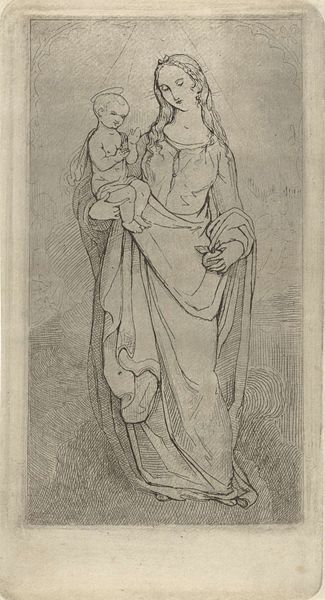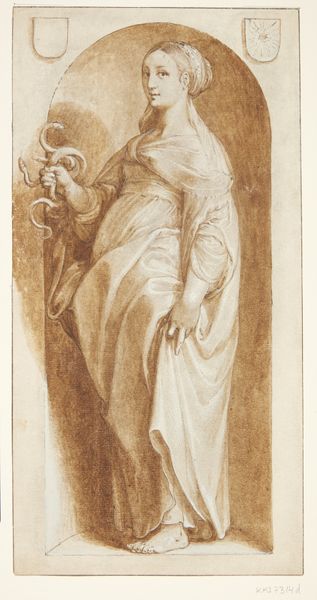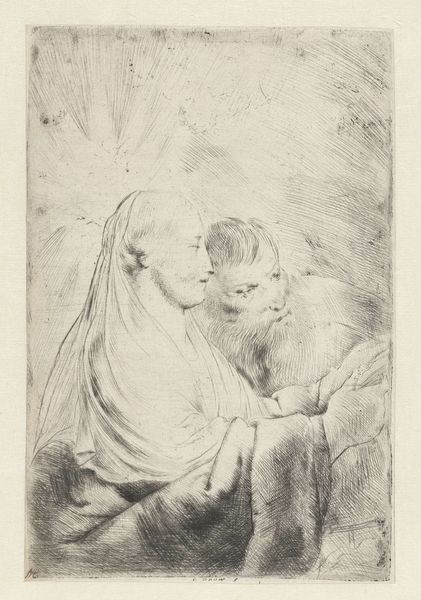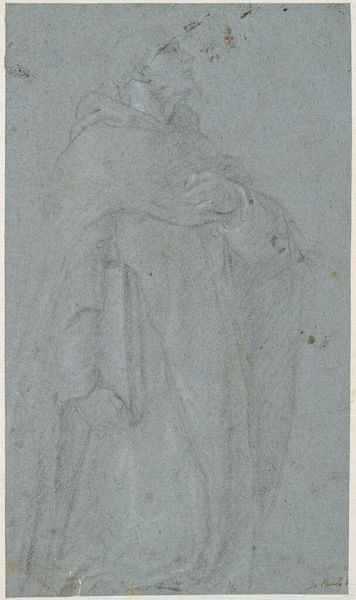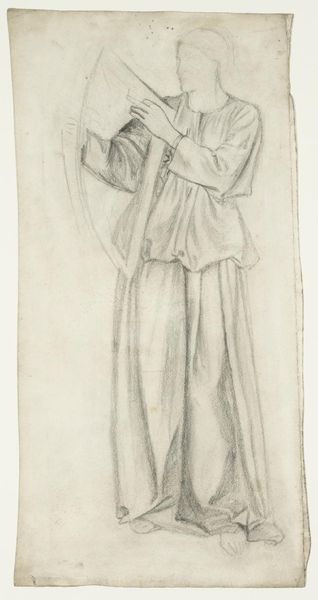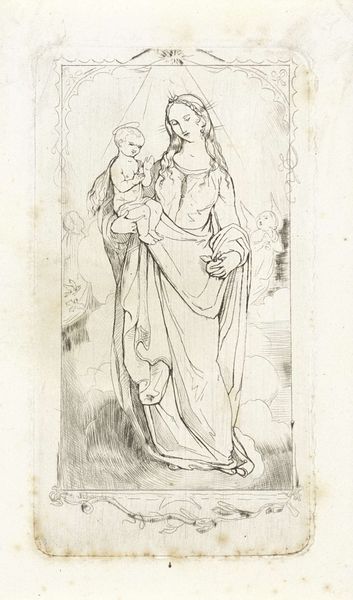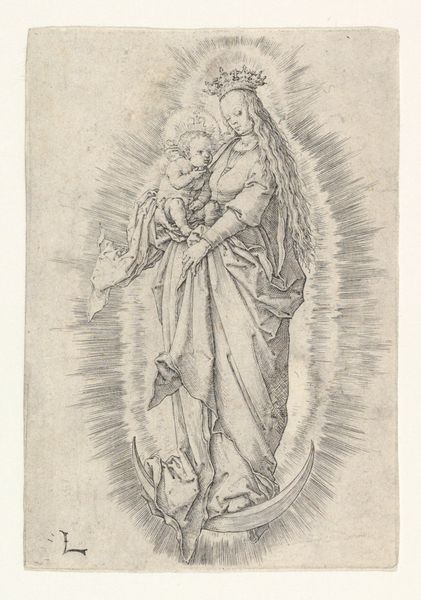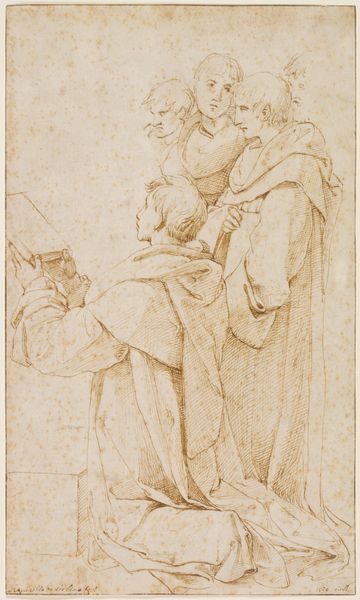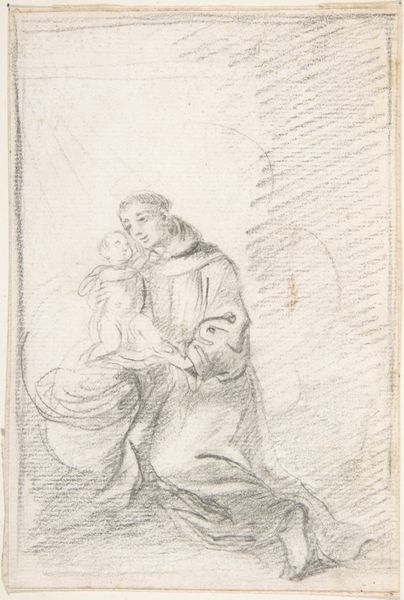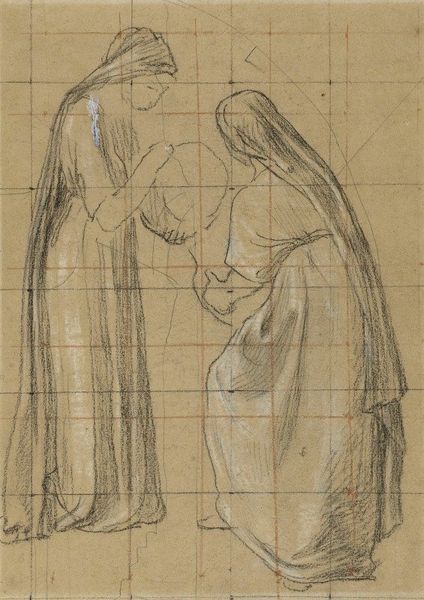
drawing, pencil
#
portrait
#
drawing
#
pencil drawing
#
pencil
#
academic-art
Dimensions: height 138 mm, width 72 mm
Copyright: Rijks Museum: Open Domain
Curator: I am immediately drawn to the intimate stillness of this pencil drawing, it is very soothing, and maternal. Editor: That is certainly an apt reaction. What you’re seeing is titled “Zogende maagd Maria,” which translates to “Nursing Virgin Mary.” Arnoud Schaepkens created this sensitive work sometime between 1831 and 1904. It's quite a traditional, yet deeply personal depiction of the Madonna and Child. Curator: Absolutely, I see that, especially how he captures her gentle gaze downwards, she looks so tired, but content at the same time, with the use of a delicate pencil work. Do you know if Schaepkens had any historical references? Editor: Given the period, it’s reasonable to assume that Schaepkens would have looked at old masters like Raphael and Leonardo da Vinci for inspiration. Academic art training in the 19th century relied heavily on the canon. These references gave weight to religious symbolism while maintaining the sanctity of Mary. Curator: It is very well achieved then. I mean, breastfeeding is, undeniably, such a raw and human moment and this depiction presents the mother as so calm, not in the sense of divinity but a human connection, a motherly bond. She is protected, but we, as viewers, are also being protected from an unwanted glimpse of something too carnal, and the verticality enhances that protection. Editor: Precisely. It delicately navigates that line. The composition and technique certainly serve a dual purpose: to idealize the Madonna while subtly reminding us of her humanity. Notice, too, how the softness of the pencil lines and the lack of strong contrast contribute to this overall sense of gentleness, reinforcing idealized motherly love. Curator: That choice feels purposeful. It does not glorify the holiness of Mary, instead focuses on motherhood. You almost forget it's about the Virgin Mary and it becomes just another beautiful portrait. It also makes one wonder about the role of institutions, back in that era, when faced with such intimate art. Editor: Yes, absolutely, the institutions played a critical role by mediating access, shaping artistic taste through exhibitions, and also influencing artistic production through patronage. Religious institutions may have influenced and directed these works based on specific theologies. In that era, and even more so today, depicting Virgin Mary has the ultimate protective value, but the intention from Arnoud Schaepkens looks clear, with the sensitive and human way to transmit maternal emotion. Curator: Well, reflecting on our discussion, this deceptively simple drawing opens a window into the complex interplay between artistic tradition, personal expression, and the evolving perception of maternal icons in the 19th century. Editor: Agreed. By looking closely at the subtle symbols, combined with its cultural backdrop, we can find new understanding in such historical portrait.
Comments
No comments
Be the first to comment and join the conversation on the ultimate creative platform.

